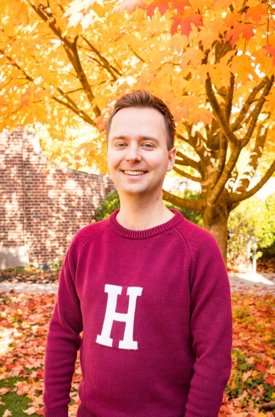Integrated Coherent Sources from Infra-Red to Ultra-Violet
Kees Franken is a PhD student in the Department of Laser Physics & Nonlinear Optics. (Co-)Promotors are prof.dr. K.-J. Boller and dr. P.J.M. Slot from the Faculty of Science & Technology and prof.dr. M. Lončar from the Harvard University.
 Driven by demands in telecommunications, metrology, bio-sensing and quantum technologies, this thesis describes the development of novel integrated coherent light sources across the optical spectrum. The introduction is followed by a theoretical background chapter on photonic integrated circuit design, extended cavity diode lasers and nonlinear optics. Five chapters showcase light generation in successive wavelength regimes from the infra-red to the ultra-violet (UV).
Driven by demands in telecommunications, metrology, bio-sensing and quantum technologies, this thesis describes the development of novel integrated coherent light sources across the optical spectrum. The introduction is followed by a theoretical background chapter on photonic integrated circuit design, extended cavity diode lasers and nonlinear optics. Five chapters showcase light generation in successive wavelength regimes from the infra-red to the ultra-violet (UV).
Chapter 3 integrates two InP amplifier waveguides with a thin-film lithium niobate circuit via the wafer-scale integration method of photonic wire bonding. The extended cavity diode laser emits 76 mW of power, tunes over 43 nm around 1530 nm, achieves a 550 Hz intrinsic linewidth and maintains mode-hop-free operation for more than two days.
Chapter 4 presents the first hybrid integrated diode laser in the visible spectrum, which consists of an AlGaInP amplifier edge-coupled to a low-loss Si₃N₄ feedback circuit. The laser delivers 4.8 mW of power, has a 10.8-nm wavelength coverage around 684 nm and reaches a 2.3-kHz intrinsic linewidth.
Chapter 5 advances to blue wavelengths by bonding a GaN amplifier to Si₃N₄ waveguides without adhesives in the optical paths and using hermetically sealed packaging. The resulting laser emits 0.54 mW, tunes a record-wide 8.5 nm (12.4 THz) around 454 nm and operates stably over long periods.
Chapter 6 reports the first extended cavity diode laser on the novel Al₂O₃ waveguide platform with a material transparency into the deep ultra-violet. The device integrates a GaN gain chip via UV-compatible bonding with an Al₂O₃ circuit. The laser emits 3.5 mW of power, has a 4.4-nm tuning range around 405 nm, and reaches 313-kHz intrinsic linewidth.
Chapter 7 adopts an alternative route for UV light generation using nonlinear conversion. Sidewall poled, thin-film lithium niobate waveguides are used for on-chip second harmonic generation to 390 nm, achieving a record of 4.2 mW UV output and normalized conversion efficiency of 5045 %W⁻¹cm⁻².
The concluding chapter summarizes the results, directly compares our work to the current research landscape and looks ahead at emerging materials and technologies. These advances pave the way for compact, scalable sources in high-speed telecommunications, quantum computing and portable optical clocks.





